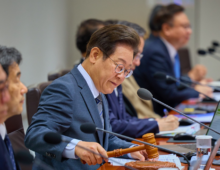Economic slowdown in Q2 doesn’t appear to change central bank’s cautious optimism about modest recovery prospects
South Korea’s economy contracted by 0.2% in the second quarter compared to the previous quarter after growing by 1.3% in the first quarter, according to the Bank of Korea. Compared to the same period last year, the real gross domestic product (GDP) — which adjusts for inflation — grew by 2.3%. Nominal gross national income (GNI), which measures the total income earned by a country’s residents, increased by 0.9% from the previous quarter and 6.0% from the same time last year. However, this growth was slower than the growth in nominal GDP because of a drop in income from abroad. The real GNI, which adjusts for inflation and trade, fell by 1.4% quarter-over-quarter due to worsening trade conditions.
Manufacturing saw a modest increase of 0.8% in sectors, while construction fell sharply by 6.0%, and services remained unchanged. Consumer spending decreased slightly by 0.2%, and investments in construction and equipment also weakened. Imports grew by 1.6%, slightly higher than the 1.2% increase in exports. The GDP deflator, a measure of overall price changes in the economy, rose by 4.8% compared to last year. Meanwhile, the ratio of savings to GDP was 35.2%, and the ratio of investment to GDP was 30.7%.
South Korea’s economy contracted by 0.2% in the second quarter compared to the previous quarter after growing by 1.3% in the first quarter, according to the Bank of Korea. Compared to the same period last year, the real gross domestic product (GDP) — which adjusts for inflation — grew by 2.3%. Nominal gross national income (GNI), which measures the total income earned by a country’s residents, increased by 0.9% from the previous quarter and 6.0% from the same time last year. However, this growth was slower than the growth in nominal GDP because of a drop in income from abroad. The real GNI, which adjusts for inflation and trade, fell by 1.4% quarter-over-quarter due to worsening trade conditions.
Manufacturing saw a modest increase of 0.8% in sectors, while construction fell sharply by 6.0%, and services remained unchanged. Consumer spending decreased slightly by 0.2%, and investments in construction and equipment also weakened. Imports grew by 1.6%, slightly higher than the 1.2% increase in exports. The GDP deflator, a measure of overall price changes in the economy, rose by 4.8% compared to last year. Meanwhile, the ratio of savings to GDP was 35.2%, and the ratio of investment to GDP was 30.7%.
Get your
KoreaPro
subscription today!
Unlock article access by becoming a KOREA PRO member today!
Unlock your access
to all our features.
Standard Annual plan includes:
-
Receive full archive access, full suite of newsletter products
-
Month in Review via email and the KOREA PRO website
-
Exclusive invites and priority access to member events
-
One year of access to NK News and NK News podcast
There are three plans available:
Lite, Standard and
Premium.
Explore which would be
the best one for you.
Explore membership options












